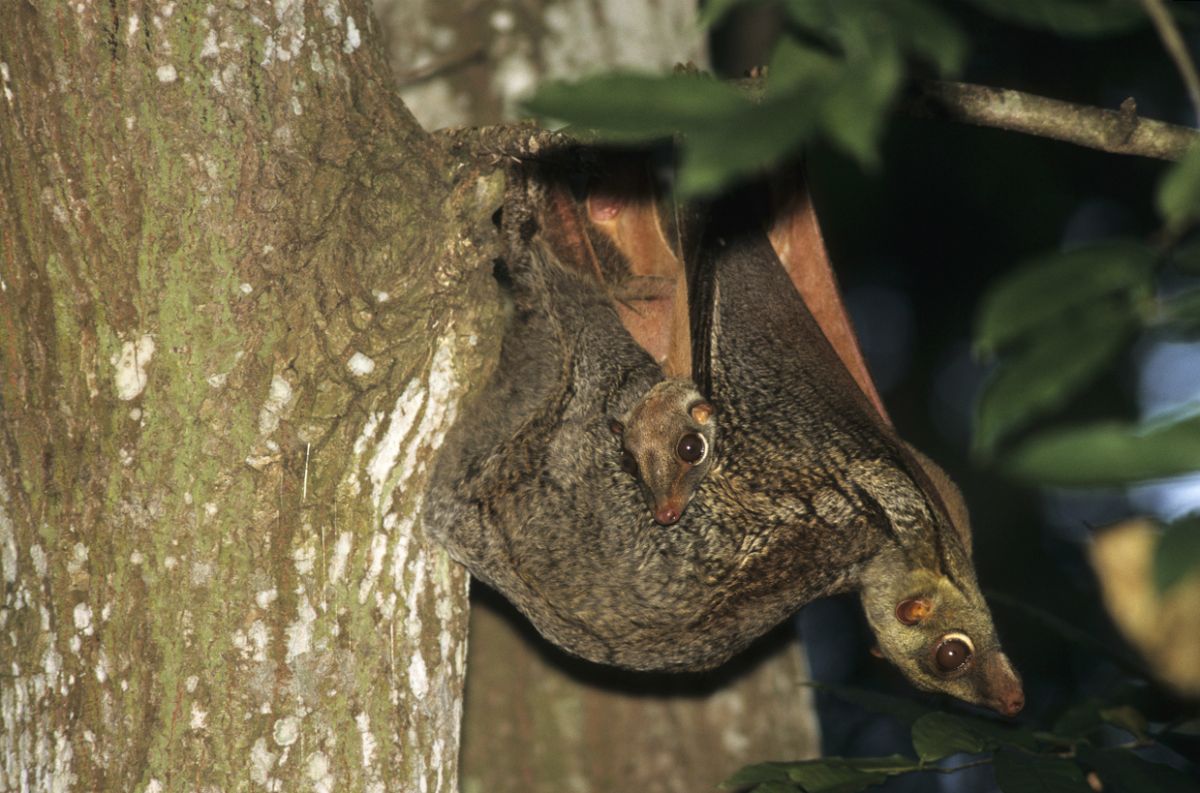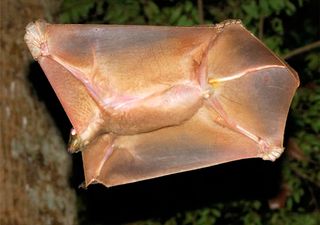This Mysterious Gliding Mammal Is a 'Sister' to Primates

Gliding mammals called colugos sail through the air using membranes that stretch between their limbs and resemble the wings of bats. But these furry gliders are actually a sister group to primates, a new study finds.
Colugos are tree dwellers, with limbs connected by flaps of skin known as a patagium, or gliding membrane. These critters live in southeast Asia, and adults measure about 14 to 16 inches (35 to 40 centimeters) long and weigh around 2 to 4 lbs. (1 to 2 kilograms).
Scientists have debated colugos' lineage for the past century. Some experts had linked them to tree shrews, with which colugos share certain physical traits. But recent genetic sequencing revealed that colugos are more closely related to primates — the group that includes great apes and humans. This finding could help scientists develop a clearer picture of evolution in the earliest primates, the researchers suggested. [Image Gallery: Evolution's Most Extreme Mammals]
There are only two known colugo species — sometimes referred to as "flying lemurs," though they are not lemurs and do not fly — and they are poorly understood for a number of reasons, according to study co-author William Murphy, a professor in the Department of Veterinary Integrative Biosciences at Texas A&M University.
Colugos' unusual gliding adaptations have hampered efforts to keep them in captivity, Murphy told Live Science in an email. And their nocturnal lifestyle high in the tree canopies makes it difficult for scientists to observe and track them in the wild.
"Only a few publications have documented their [colugos'] ecology and habits," Murphy said.

Obtaining fresh tissue samples from colugos for DNA sequencing was understandably challenging, Murphy noted. The first attempts to analyze colugos' DNA — which represented only part of the colugo genome — didn't provide any easy answers. The colugo lineage diverged from other mammals more than 80 million years ago, Murphy told Live Science. And early DNA analysis couldn't pinpoint colugos' location on the mammalian family tree, leaving scientists uncertain as to whether they were more closely related to primates, tree shrews, or the group that includes rabbits and rodents, he explained.
Sign up for the Live Science daily newsletter now
Get the world’s most fascinating discoveries delivered straight to your inbox.
For the new study, researchers sequenced the complete genome of a west Javan colugo for the first time, comparing it to sets of protein-coding genes from 21 other mammal species. They also looked for certain rare genetic markers that, when found, are "very reliable indicators" of relationships between animal groups, Murphy said.
All of their research pointed to the same conclusion: that colugos were a sister group to primates. According to Murphy, understanding the nature of this relationship could affect how scientists interpret the fossils of extinct mammals that share characteristics with both colugos and primates.
At the same time, the researchers made another unexpected discovery. As part of their exploration of the colugo genome, they extracted DNA from tissue samples in museums, most of which were collected 50 to 100 years ago from colugos across all their known ranges. The scientists found that there were likely far more species of colugos than previously suspected, Murphy told Live Science.
"Our genetic results suggest that there are at least seven to eight colugo species, and possibly as many as 14," he said, adding that further analysis of the specimens and documentation of their genetic data would be required before the final number of species can be confirmed.
The findings were published online today (Aug. 10) in the journal Science.
Original article on Live Science.

Mindy Weisberger is an editor at Scholastic and a former Live Science channel editor and senior writer. She has reported on general science, covering climate change, paleontology, biology and space. Mindy studied film at Columbia University; prior to Live Science she produced, wrote and directed media for the American Museum of Natural History in New York City. Her videos about dinosaurs, astrophysics, biodiversity and evolution appear in museums and science centers worldwide, earning awards such as the CINE Golden Eagle and the Communicator Award of Excellence. Her writing has also appeared in Scientific American, The Washington Post and How It Works Magazine. Her book "Rise of the Zombie Bugs: The Surprising Science of Parasitic Mind Control" will be published in spring 2025 by Johns Hopkins University Press.











